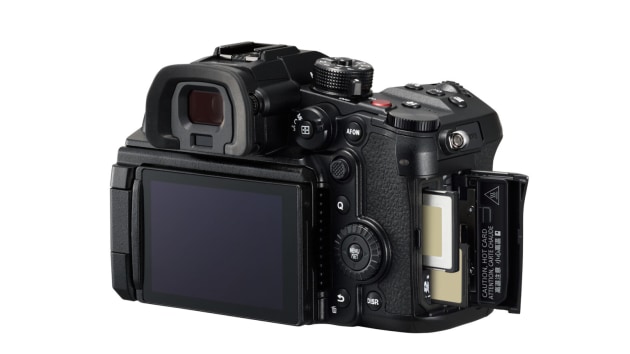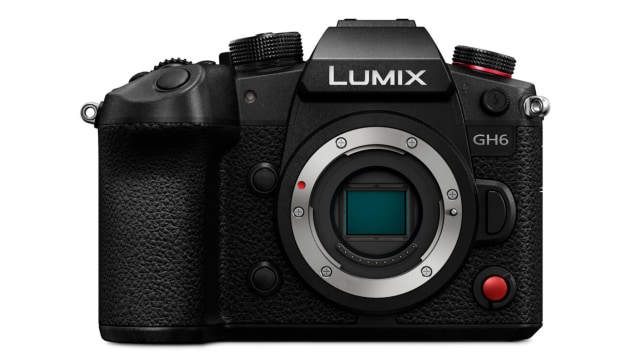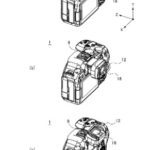It’s getting harder and harder to review cameras these days. Whilst not as difficult as say, printers (yawn), cameras have become so good that there is little to talk about apart from the technical aspects and the ergonomics in most cases.
In general, what a camera does – take still photos or video – most cameras today do very well indeed.
There are very few major technical or ergonomic breakthroughs in newer models, and the new model of an old favourite is generally only a bit of and tweak and tuck here and there. The last real major leap forward was the launch of the mirrorless 4/3rd series, and out of that melee of brands and models, pretty much Panasonic and Sony have become the champions of the users.
(I suppose Canon might disagree with their R series mind you).
The GH series of mirrorless cameras, which launched around 2009 is now firmly established among photographers and videographers and has sort become Panasonic’s Holden or Coke to Sony’s Ford or Pepsi alpha series.
It’s been out a while, but I just managed to get my hands on the latest GH model, the GH6.
First Impressions
 It’s easily the biggest GH model yet and has a corresponding weight. The magnesium alloy body only is 820 odd grams, but when I nailed the supplied 12-60mm zoom lens on it, this ballooned to 1.2Kg. In width and depth its not far off my Canon 5Ds, although not as tall.
It’s easily the biggest GH model yet and has a corresponding weight. The magnesium alloy body only is 820 odd grams, but when I nailed the supplied 12-60mm zoom lens on it, this ballooned to 1.2Kg. In width and depth its not far off my Canon 5Ds, although not as tall.
Apparently, the extra depth is caused by having a new fan behind the sensor, and is there to provide cooling for the storage media. The options have changed here as previous GH models had a pair of SD card slots, but the GH6 comes with an SD slot and a CF Express card slot enabling much faster write times, and thus making it ideal for 4K video, and even 5.7K up to 60 frames per second (in MP4 or MOV) or 5.7K 30fps in ProRes 10 bit RAW.
Be prepared to put your hand in your pocket though if this is in your plans as a decent CFExpress card is seriously expensive. For example, a quick internet check shows a Sony Tough CFExpress Type A card of 640GB has a going price of $2,500!
Back to the camera though and the flip out LCD (1,840,000 dots if you are interested) also rotates and tilts. But as usual, bright sunlight just blows it out of the water meaning you have to either revert to the OLED electronic viewfinder (3,680,000 dots there) or add an external monitor with the appropriate NIT rating to combat the sun.
The control dials on the top of the GH6 are large and there are three buttons just behind the shutter release for White Balance, ISO and Exposure Compensation.
A new feature on the back panel is a locking lever. To stop a bump or a knock and thus change settings right when you don’t want it to, turning this lever locks all the controls in place including the joystick, front and read dials and menu buttons.
Nice touch Panasonic.
The Sensor
 The heart of any camera is the sensor and the one employed in the GH6 is a new 25.2 megapixel Live MOS sensor. This has a few party tricks such as dual gain readouts on each pixel that improves the dynamic range, and some other whizzbangery Panasonic states improves sharpness and detail. A 5-axis stabiliser provides 7.5 steps of motion correction which is an improvement on the GH5’s 6.5.
The heart of any camera is the sensor and the one employed in the GH6 is a new 25.2 megapixel Live MOS sensor. This has a few party tricks such as dual gain readouts on each pixel that improves the dynamic range, and some other whizzbangery Panasonic states improves sharpness and detail. A 5-axis stabiliser provides 7.5 steps of motion correction which is an improvement on the GH5’s 6.5.
Also improved is the processing engine, dubbed Venus. It has twice the processing power of its predecessor allowing the camera to capture up to 14 frames a second in RAW mode with the mechanical shutter, and 75 fps with the electronic one.
Impressive.
The small issue here though is that the auto focus, due to the way Panasonic implements it, only allows 8 frames per second. However, I would submit that a pro-photographer or anyone that would know their way around a camera such as this would mainly be using manual focus anyway.
Compatibility
These days it is almost mandatory that a camera capable of video at this level – and make no bones, as a video shooter the GH6 is to my mind exceptional – also be used at times on a gimbal. A quick check shows that if you own, or are planning on getting a gimbal, then from DJI the RS3 and RS3 Pro are both suitable, but in the Zhiyun range, surprisingly none are listed. In the Feiyutech range the Scorp C and Pro and AK2000S and C models are said to be OK.
Of course, being in the 4/3rds family of cameras, there is already a large range of lenses from various manufacturers available.
Conclusion
It appears to me that Panasonic has leant more towards the video maker than the photographer with the GH6, and from my point of view, that is not a bad thing of course. It is a more than capable still camera for sure, but it doesn’t strike me as a brilliant still camera, whereas I think the GH6 is a superlative video camera.
At $3699 for the body only it is not an inexpensive camera, and as mentioned, to get the very best you need to use CFExpress cards which will add a whack on your base price – more if you need lenses of course.
I guess it depends on what you want. If its excellence in a video camera, then I could not argue against the GH6 in any form. For use as a still camera, there may be better options I feel.
Sample Footage
This is sample fotage straight from the camera with no post editing at all apart from the added titles and lower 3rd
















The GH6 is excellent. Don’t miss the Anamorphic (open gate) modes which let you record the whole sensor in a 4:3 video, excellent for delivering to widescreen and portrait from the same source clip. You can also record direct to SSD, removing the need for expensive CF Express cards, though you can’t dual-record to memory cards while doing so.
Thanks Iain, I wasn’t aware of the direct to SSD option; I do that with my BMD Pocket Camera 6K as well.